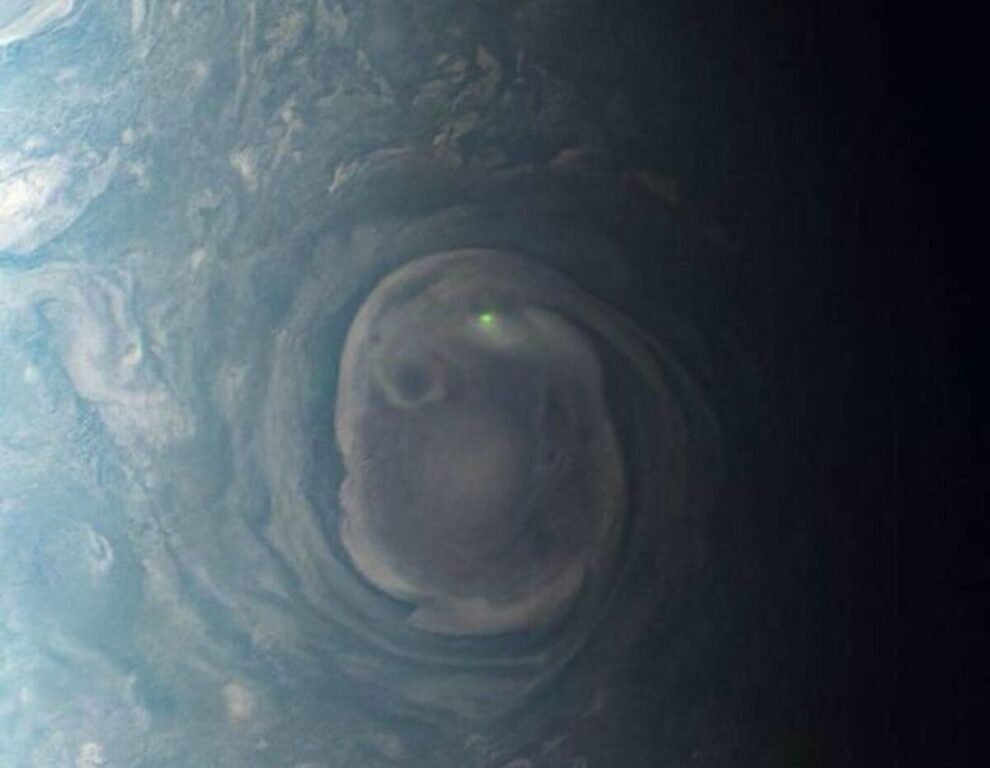NASA’s spacecraft has shared an astonishing image of a green dot light on Jupiter, CBS News reported. According to NASA, the glowing orb is a lightning bolt on the north pole of the planet.
NASA captures rare image of Jupiter struck by neon green dot light caused by a lightning bolt on the north pole of the planet
This radiant illumination is a result of electrically charged lightning crackling near the gas giant’s northern extremity, bearing a resemblance to the natural phenomenon witnessed on our own planet, the report stated.
While terrestrial lightning originates from water-laden clouds and is commonly observed near the equator, on Jupiter, lightning likely emerges within clouds composed of an ammonia-water mixture, manifesting predominantly in the polar regions.
According to NASA, while lightning on our planet is typically generated by water clouds near the equator, Jupiter’s poles experience lightning due to the presence of clouds consisting of an ammonia-water solution.
In 2016, the Juno spacecraft embarked on its mission to explore Jupiter, completing 35 orbits around the gas giant while collecting valuable data and capturing captivating images. These images captured by Juno are publicly released by NASA, allowing individuals to download and analyze them.
On December 30, 2020, Juno, positioned approximately 19,900 miles above Jupiter’s cloud tops, successfully recorded the mesmerizing image of the lightning bolt. The credit for processing this image goes to Kevin M. Gill, acknowledged by NASA as a “citizen scientist.”
Lightning phenomena explored by voyager 1, Juno, and Mars Global Surveyor
Lightning phenomena are not exclusive to Earth, as evidenced by Voyager 1, a spacecraft that, in 1979, captured lightning flashes on Jupiter that were ten times more powerful than those experienced on our own planet, according to NASA. Furthermore, on Saturn, lightning strikes can occur at an astounding frequency of up to ten times per second.
Although data from the Mars Global Surveyor did not directly capture information on lightning, notable bright flashes were observed during dust storms. Some scientists speculate that lightning strikes might be responsible for the formation of craters on Mars.
Initially slated for a five-year duration, Juno’s mission has been extended by NASA until 2025. Throughout its journey, the spacecraft has amassed valuable information concerning Jupiter’s internal structure, internal magnetic field, atmosphere, magnetosphere, the delicate dust within its faint rings, and the enigmatic Great Blue Spot—an intense magnetic field in close proximity to the planet’s equator.
